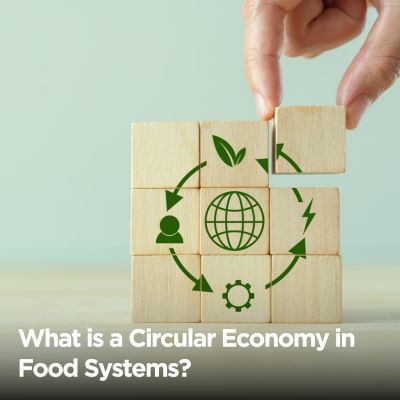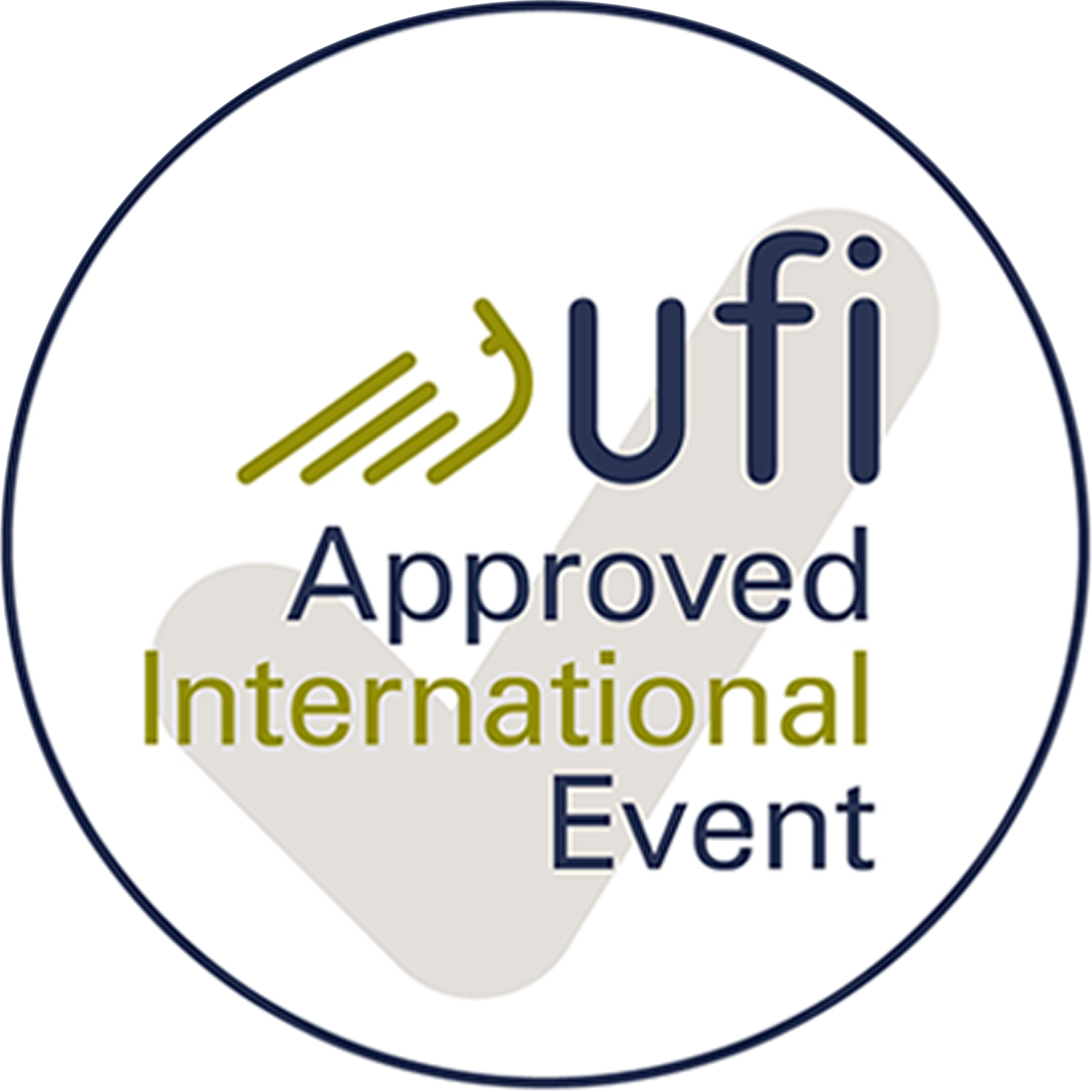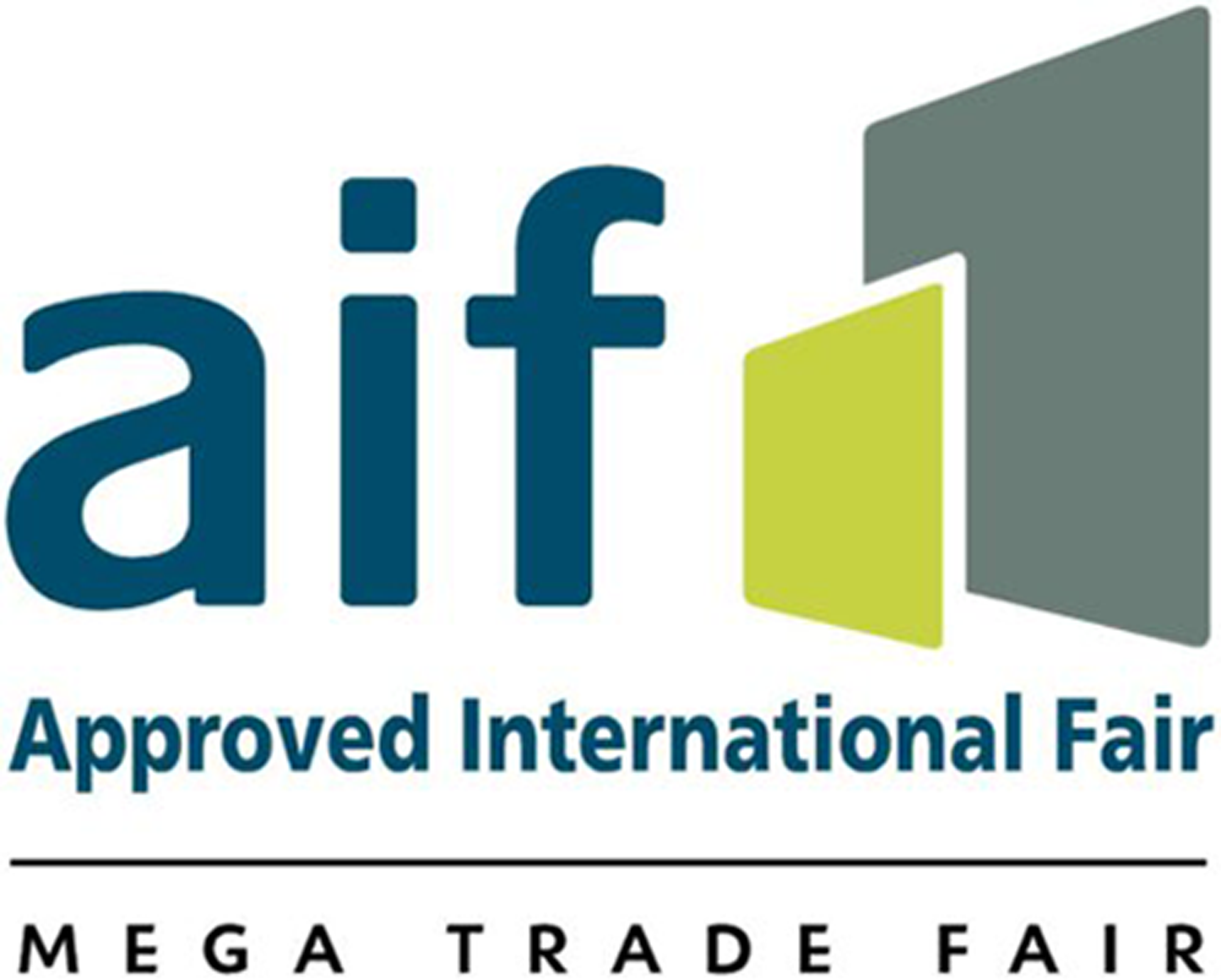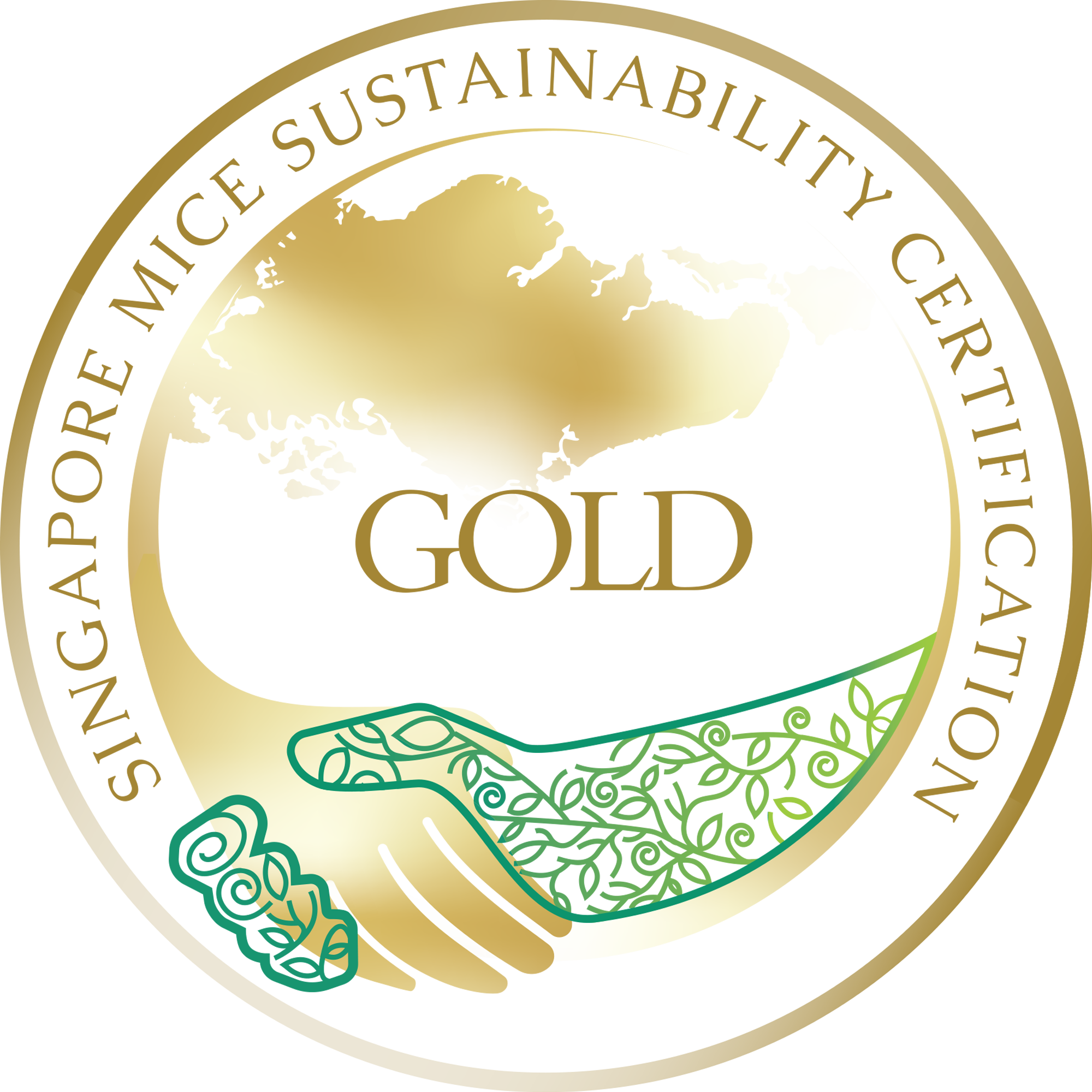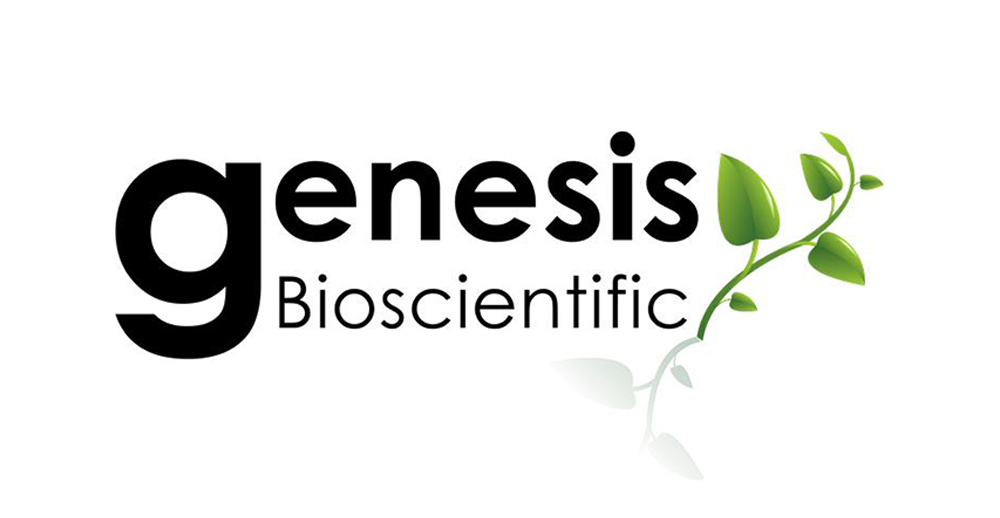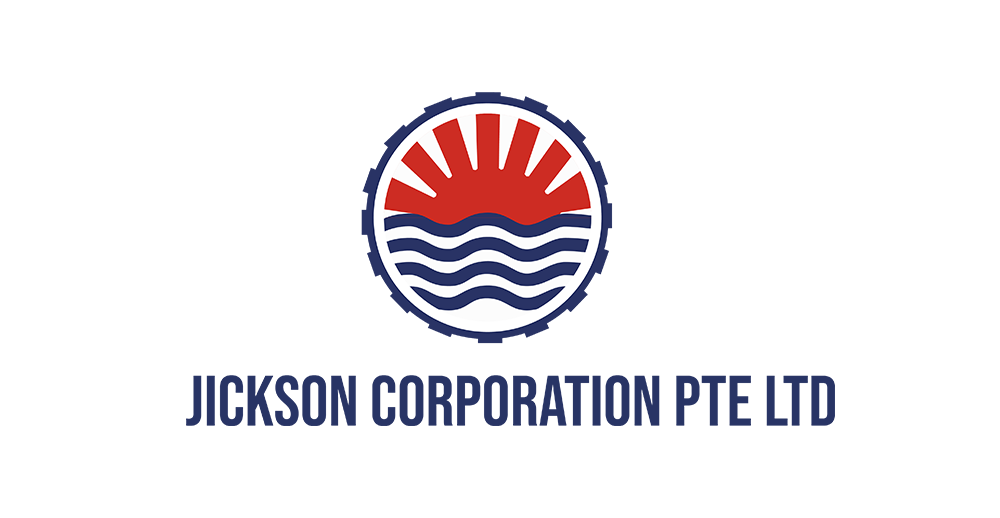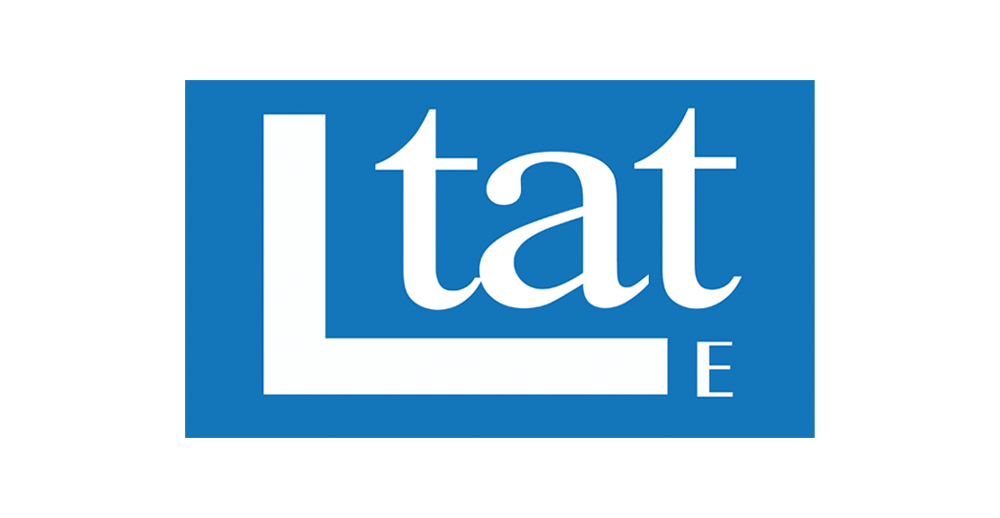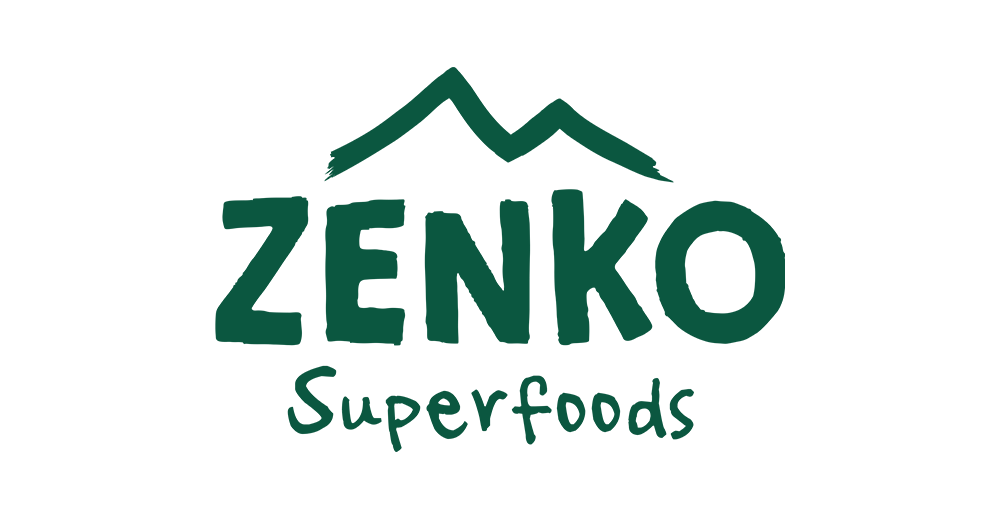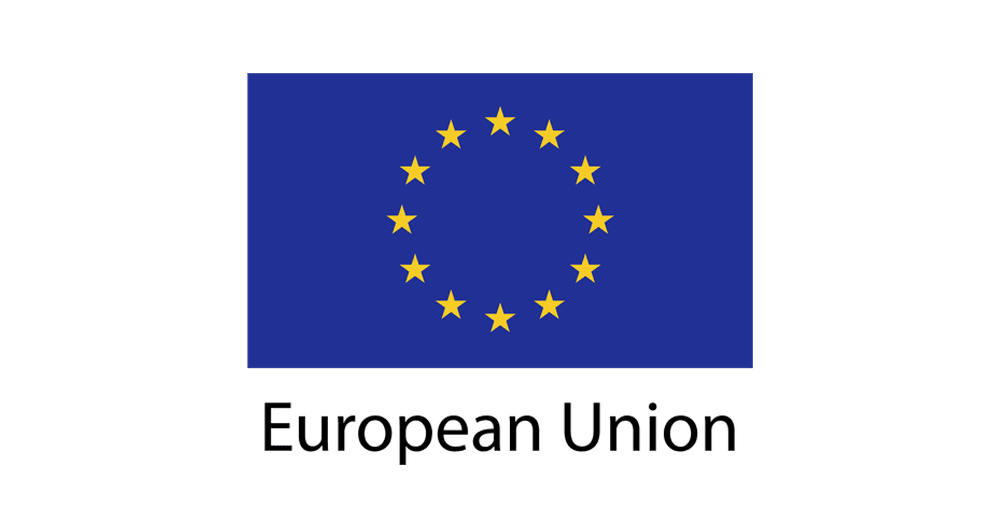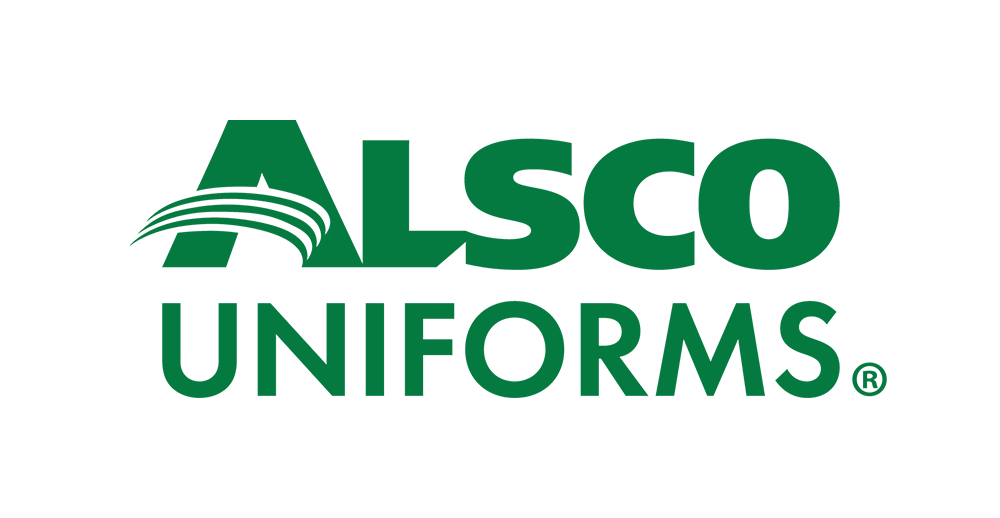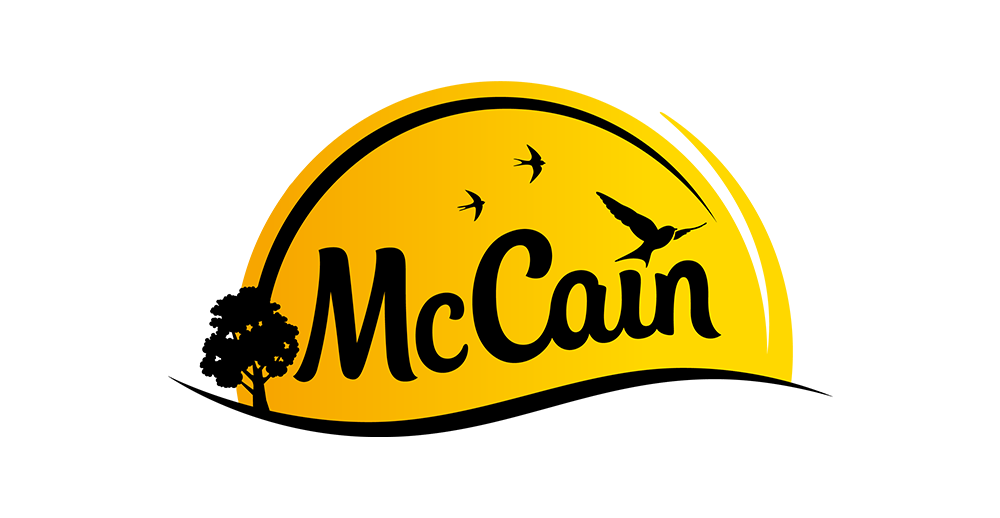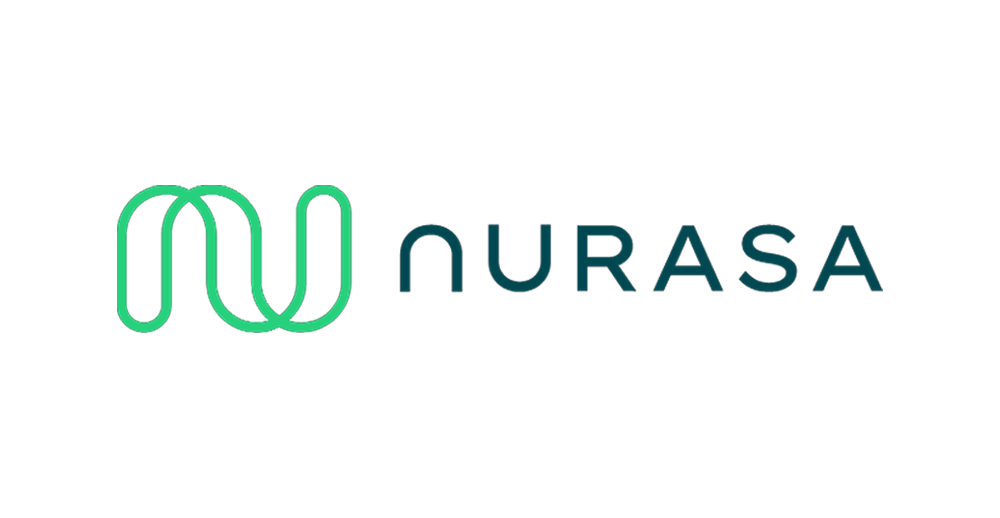Food safety is a primary concern for production, processing, and distribution businesses. To ensure safe practices and regulatory compliance, many organizations pursue ISO 22000 certification, an internationally recognized food safety management standard.
But what is ISO 22000 certification, and why is it important? ISO 22000 establishes a structured framework for identifying and controlling food safety hazards, ensuring food remains safe throughout the supply chain.
This certification is crucial for businesses seeking to enhance consumer trust, operational efficiency, and global market access. By implementing risk-based thinking and preventive controls, companies can minimize contamination risks and improve product quality.
ISO 22000 applies to all food industry sectors, including manufacturers, suppliers, retailers, and packaging companies.
With its comprehensive approach to food safety management, this certification helps businesses demonstrate their commitment to food safety while meeting international regulatory requirements and industry best practices.
Key Components & Principles of ISO 22000

ISO 22000 is more than just a food safety management system—it’s a structured framework that helps businesses integrate food safety, risk management, and quality control into their operations.
Organizations that implement ISO 22000 guidelines can identify potential hazards, establish preventive controls, and ensure food products remain safe from production to consumption.
One of the main strengths of ISO 22000 food safety is its ability to combine food safety management with quality assurance.
This means businesses don’t just focus on eliminating contamination risks but also ensure product consistency, traceability, and compliance with international regulations.
Implementing ISO 22000 helps companies reduce waste, improve efficiency, and build customer trust by delivering consistently safe food products.
The HACCP framework is a fundamental part of ISO 22000, guiding businesses in identifying, evaluating, and controlling food safety hazards.
HACCP requires companies to pinpoint critical control points (CCPs) — stages in food production where risks like bacterial contamination, chemical exposure, or physical hazards are most likely to occur.
By establishing preventive measures and monitoring these points, businesses can proactively manage food safety risks and reduce the likelihood of recalls or foodborne illnesses.
ISO 22000 also emphasizes risk management, requiring businesses to develop a structured approach to identifying, analyzing, and controlling potential food safety risks. This proactive system ensures that hazards are addressed before they become serious issues.
Another major component is traceability, ensuring businesses maintain complete records of ingredients and finished products.
This makes it easier to track sources of contamination, manage recalls efficiently, and provide transparency in the food industry to consumers and regulatory bodies.
ISO 22000 Certification Process & Requirements
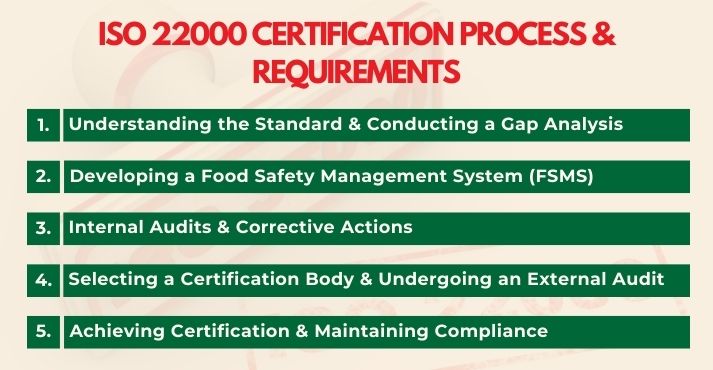
Achieving ISO 22000 certification involves a structured approach to implementing a food safety management system (FSMS) that meets international standards.
The process includes assessing current food safety practices, establishing a risk-based management system, and undergoing external audits to verify compliance.
Food businesses can enhance safety, regulatory compliance, and consumer confidence by following these steps:
Step 1: Understanding the Standard and Conducting a Gap Analysis
The first step in the ISO 22000 certification process is to clearly understand the standard’s requirements. Businesses must conduct a gap analysis to assess their current food safety practices and identify areas that need improvement to comply with ISO 22000 requirements.
Step 2: Developing a Food Safety Management System (FSMS)
Once gaps are identified, developing a food safety management system (FSMS) based on ISO 22000 is next. This includes defining food safety objectives, establishing hazard control measures, and implementing processes for monitoring and documentation.
Step 3: Internal Audits and Corrective Actions
Before applying for certification, businesses must conduct internal audits to ensure the effectiveness of their FSMS. Corrective actions must be taken to resolve them and strengthen compliance if any non-conformities are found.
Step 4: Selecting a Certification Body and Undergoing an External Audit
An accredited certification body must be chosen to obtain certification for food businesses. External auditors will then evaluate the organization’s FSMS, reviewing documentation, procedures, and on-site operations to ensure compliance with ISO 22000.
Step 5: Achieving Certification and Maintaining Compliance
Once a business passes the external audit, it receives ISO 22000 certification. However, maintaining compliance is an ongoing process. Organizations must conduct regular audits, update food safety procedures, and continuously improve their FSMS.
ISO 22000 vs. Other Food Safety Standards
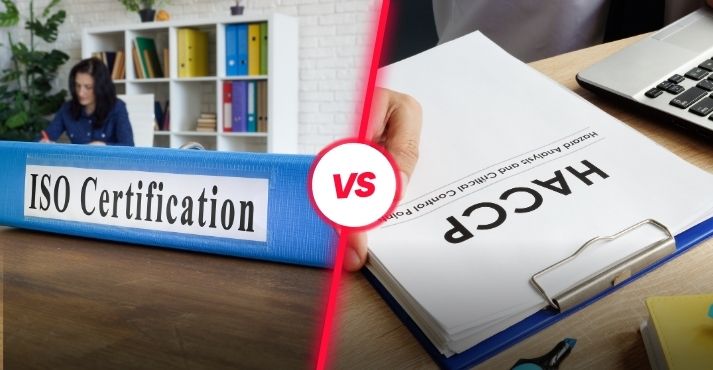
Food safety standards help businesses maintain compliance and protect consumers, but not all frameworks are the same. ISO 22000 is often compared to other well-known standards like HACCP and FSSC 22000, each offering unique approaches to food safety management.
ISO 22000 vs. HACCP
HACCP (Hazard Analysis and Critical Control Points) is a preventive system focused on identifying and controlling food safety hazards at critical points in production.
While HACCP is a core element of ISO 22000, the latter offers a broader food safety management system (FSMS) that integrates risk management, continuous improvement, and leadership commitment.
Businesses seeking a complete FSMS may prefer ISO 22000, while those looking for a hazard-specific methodology may opt for HACCP.
ISO 22000 vs. FSSC 22000
FSSC 22000 (Food Safety System Certification) is built upon ISO 22000 but includes additional sector-specific requirements and guidelines for certification.
While ISO 22000 provides the foundation for food safety management, FSSC 22000 integrates elements such as PRPs (Prerequisite Programs) customized to specific industries.
Many global food manufacturers choose FSSC 22000 for its alignment with Global Food Safety Initiative (GFSI) standards, making it more recognized by major retailers.
Industry Adoption and Compliance Trends
Many food businesses adopt ISO 22000 due to its flexibility and international recognition. However, some industries and regulatory bodies require stricter frameworks like HACCP or FSSC 22000 for compliance.
Choosing the right standard depends on business needs, supply chain requirements, and market demands. Understanding the differences between these certifications ensures businesses select the most suitable framework for their operations.
Benefits of ISO 22000 Certification for Food Businesses
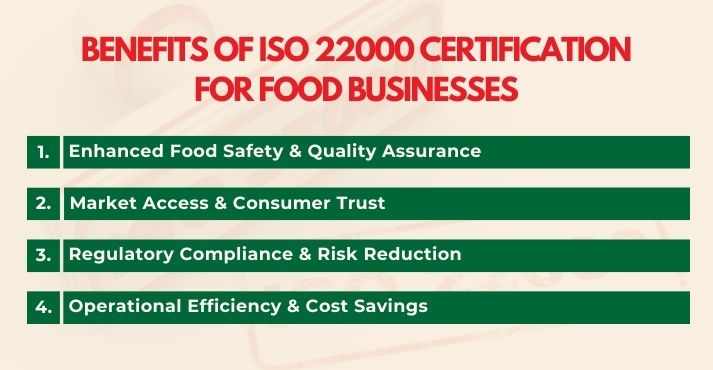
ISO 22000 certification provides a competitive advantage for food businesses by ensuring ISO food safety compliance and enhancing overall operations.
It safeguards public health, boosts business credibility, improves efficiency, and facilitates market expansion. Here’s how certification benefits food businesses:
1. Enhanced Food Safety & Quality Assurance
ISO 22000 aligns with food industry standards to establish a structured approach to food safety. Implementing a food safety management system (FSMS) helps businesses minimize contamination risks, maintain product consistency, and ensure compliance with international regulations.
This reduces the likelihood of foodborne illnesses and enhances consumer confidence. Additionally, it promotes proactive risk assessment, helping companies prevent safety hazards before they occur rather than responding after incidents arise.
2. Market Access & Consumer Trust
Certification helps businesses expand into global markets by adhering to internationally recognized food safety protocols.
Many retailers and suppliers require ISO food safety compliance as a prerequisite for partnerships, making it essential for companies to enhance their brand reputation and gain consumer trust.
With food safety being a top priority for consumers, having this certification can differentiate a brand from competitors and strengthen customer loyalty.
3. Regulatory Compliance & Risk Reduction
ISO 22000 ensures compliance with government regulations and industry-specific food safety laws. Businesses can proactively address hazards through food safety auditing, reducing the risk of legal penalties, food recalls, and reputational damage.
By identifying and controlling risks early, companies can maintain high food safety standards. Moreover, ISO 22000 integrates with legal frameworks in various countries, making it easier for businesses to meet local and international regulatory requirements.
4. Operational Efficiency & Cost Savings
Implementing ISO 22000 helps streamline food safety procedures, reducing waste and inefficiencies. Businesses benefit from better resource management, improved supply chain coordination, and reduced operational disruptions.
Integrating food safety protocols into daily processes enhances productivity while lowering costs associated with non-compliance and food safety incidents.
In the long run, this reduces expenses linked to product recalls, legal disputes, and reputational damage, making ISO 22000 a strategic investment for food businesses.
Conclusion
ISO 22000 certification is a globally recognized standard that is crucial in ensuring food safety and regulatory compliance.
Businesses can establish a reliable food safety management system that meets international requirements by integrating components like Hazard Analysis and Critical Control Points (HACCP), risk management, and continuous improvement.
The certification process involves understanding the standard, developing an FSMS, conducting audits, and obtaining approval from a certification body.
While achieving certification requires effort, the long-term benefits, such as enhanced food safety, improved market access, regulatory compliance, and operational efficiency, make it a valuable investment for food businesses.
For organizations looking to strengthen their food safety protocols, ISO 22000 offers a structured approach to minimizing risks and ensuring consumer trust.
By adopting this standard, businesses can demonstrate their commitment to quality and gain a competitive edge in the food industry.

